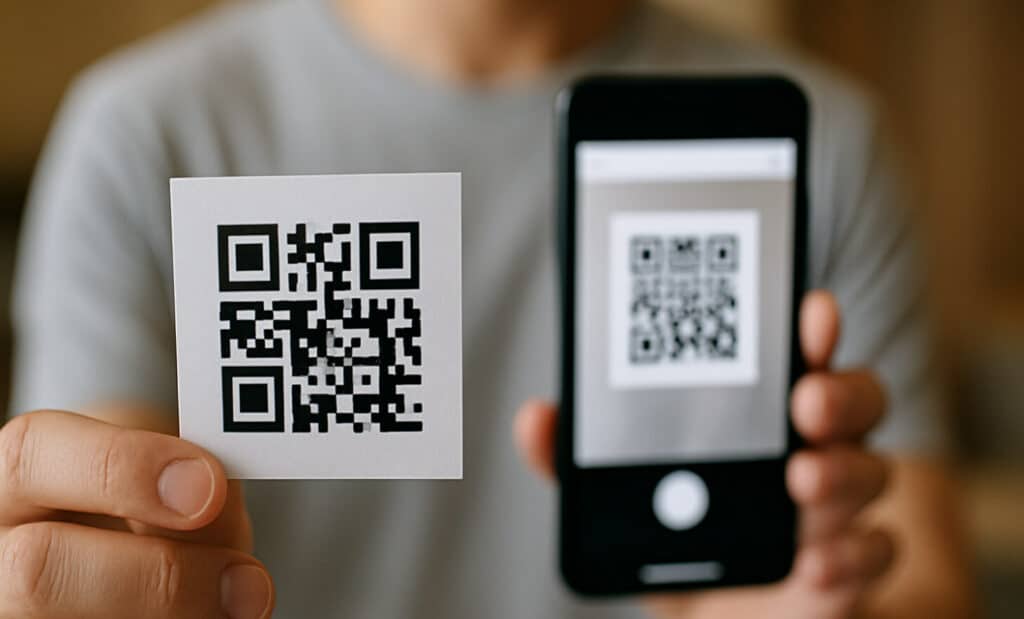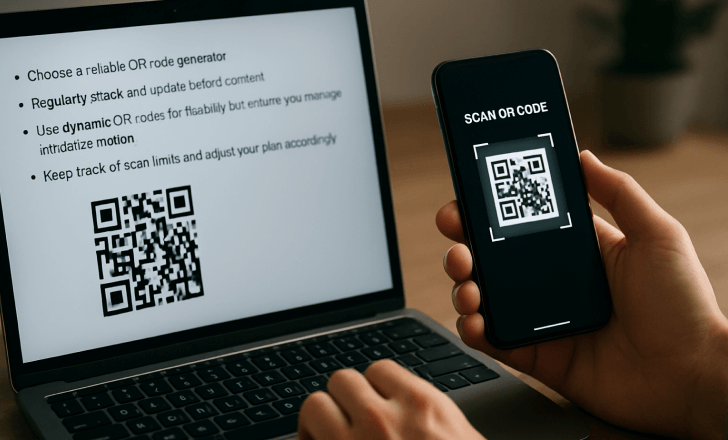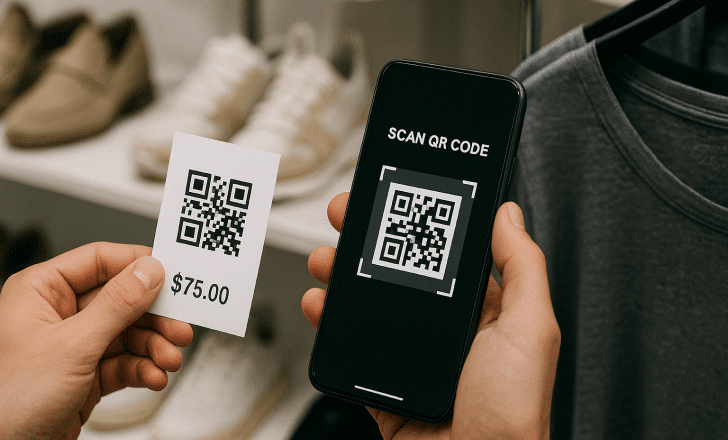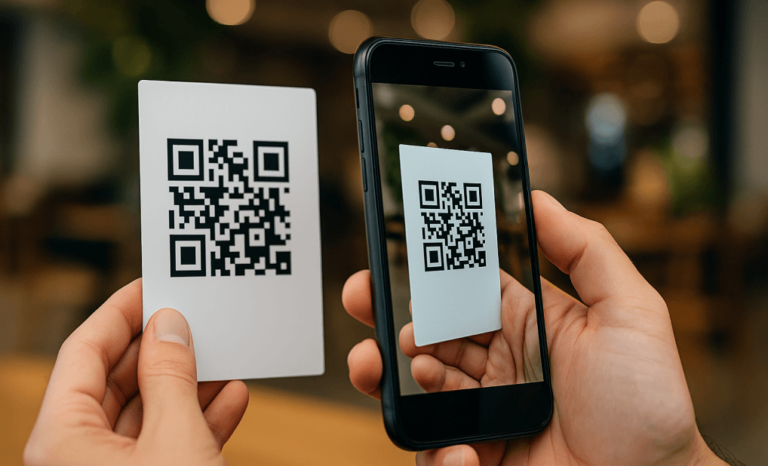QR codes have become an essential part of modern marketing and digital interaction, connecting the physical world with the digital at the quick scan of a smartphone. As their use grows, so do the questions about their longevity and reliability. One of the most common questions is: Do QR codes expire over time?
In this comprehensive guide, we’ll cover everything you need to know about QR code expiration, including the difference between static and dynamic QR codes, how to avoid dead links, and tips for keeping your QR codes functional for as long as you need them.
What are QR codes and how do they work?
QR (Quick Response) codes are two-dimensional barcodes that store a variety of data, including URLs, text, contact information, and more. When scanned using a smartphone camera or a dedicated QR code scanner, they quickly redirect users to the linked content. QR codes are popular because they are fast, reliable, and versatile, making them a staple in modern marketing.
Do QR codes expire over time?
The short answer is: It depends on the type of QR code. While static QR codes function indefinitely, a dynamic QR code can expire depending on various factors, including the service provider’s policies, subscription status, and the longevity of the linked content. Let’s break down the differences.
What is the difference between static and dynamic QR codes?
Static QR codes have fixed data embedded within the code itself. Once created, this data cannot be changed, making them permanent. Dynamic QR codes, however, work differently. They contain a short URL that redirects to the actual content, which allows the destination to be updated as needed. This flexibility comes at a cost, as it introduces the possibility of expiration.

Why do dynamic QR codes expire?
There are several reasons why dynamic QR codes may expire:
- Subscription ends: If the service provider’s subscription expires, the codes may become inactive.
- Scan limits: Some platforms impose scan limits on free or trial accounts, causing the code to expire once the limit is reached.
- Content removal: If the linked content is deleted or the URL changes without updating the QR code settings, the code will lead to a dead link or error page.
- Campaign end date: Marketing campaigns often have predefined end dates, after which the QR code is no longer needed.

Can static QR codes expire?
Static QR codes do not have an expiration date, as the data is permanently encoded. However, they can still become useless if the linked content is deleted or the URL becomes outdated.
How to prevent QR codes from expiring?
To avoid the frustration of expired QR codes, consider the following tips:
- Choose a reliable QR code generator.
- Regularly check and update linked content.
- Use dynamic QR codes for flexibility but ensure you manage the subscription.
- Keep track of scan limits and adjust your plan accordingly.

Can you create free QR codes?
Yes, many platforms offer free QR code generators, including options for both static and dynamic codes. However, keep in mind that free dynamic codes may come with limitations, such as fewer scans or an expiration date.

What happens when a QR code expires?
When a dynamic QR code expires, users scanning it may be redirected to an error page or a message indicating that the linked content is no longer available. This can hurt user experience and your brand’s credibility.
Are QR codes permanent?
While static QR codes are generally permanent, dynamic QR codes are only as permanent as their subscription allows. Some premium services offer “lifetime” dynamic QR codes, but these often come at a higher cost.
Why use dynamic QR codes instead of static ones?
Dynamic QR codes offer several advantages over static codes:
- Flexibility: You can update the content without changing the code.
- Analytics: Track scan activity, including location, device type, and time.
- Customizability: Add logos, colors, and branding for a professional look.
- Security: Dynamic codes can be protected with passwords or two-factor authentication.
What are some popular uses for QR codes?
QR codes are widely used in various industries:
- Marketing campaigns: Drive traffic to landing pages, track engagement, and increase conversions.
- Retail and eCommerce: Share product information, discounts, and promotions.
- Education and training: Provide quick access to resources, quizzes, and course materials.
- Events and conferences: Share schedules, maps, and speaker bios.
- Healthcare: Store patient information, track medications, and streamline check-ins.

How to create a QR code for free?
There are many platforms where you can create free static QR codes, such as QR Code KIT, which also offers dynamic QR code options with advanced features. Simply enter your data, choose a design, and generate your code.
How can QR codes be used in marketing?
QR codes are a powerful tool for marketers. They can be used to:
- Promote apps and services.
- Share social media profiles (Facebook QR code, Instagram QR code, YouTube QR code).
- Drive traffic to specific landing pages.
- Track the effectiveness of offline marketing efforts.
What are the different types of QR codes?
QR codes come in various types, including:
- URL QR codes – Link to a website.
- Email QR codes – Create a pre-filled email draft.
- Text QR codes – Display a simple message.
- Digital business card QR codes – Share contact details.
- Wi-Fi QR codes – Connect to a Wi-Fi network without entering a password.
How can you ensure QR codes remain functional indefinitely?
Maintaining the longevity of your QR codes involves regular maintenance, choosing a reliable service provider, and ensuring that the linked content remains active.
What are the common mistakes to avoid when creating QR codes?
- Not testing the QR code before printing.
- Using low-quality image files.
- Forgetting to track scan metrics.
- Not updating the linked content regularly.

Conclusion
QR codes are a powerful tool for connecting the physical and digital worlds, but understanding the difference between static and dynamic QR codes is crucial to avoid unexpected disruptions. Whether you’re using them for marketing campaigns, customer engagement, or personal projects, make sure you choose the right type of code and keep your subscription up to date to avoid dead links and expired content.
Stay tuned for more insights into QR code best practices, creative uses, and cutting-edge trends in this fast-evolving technology.
